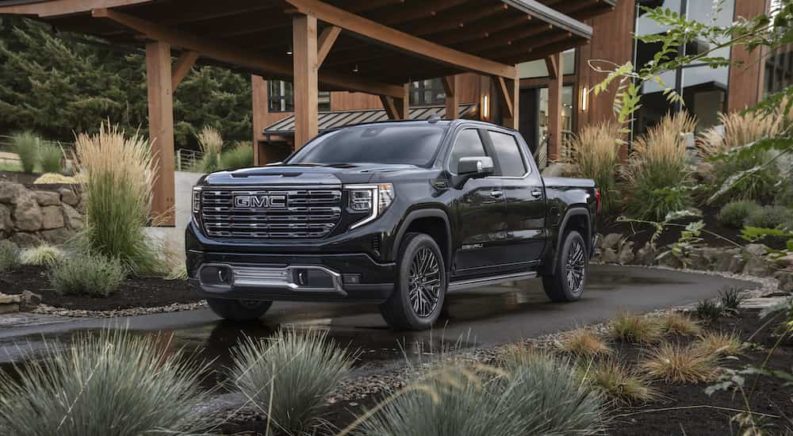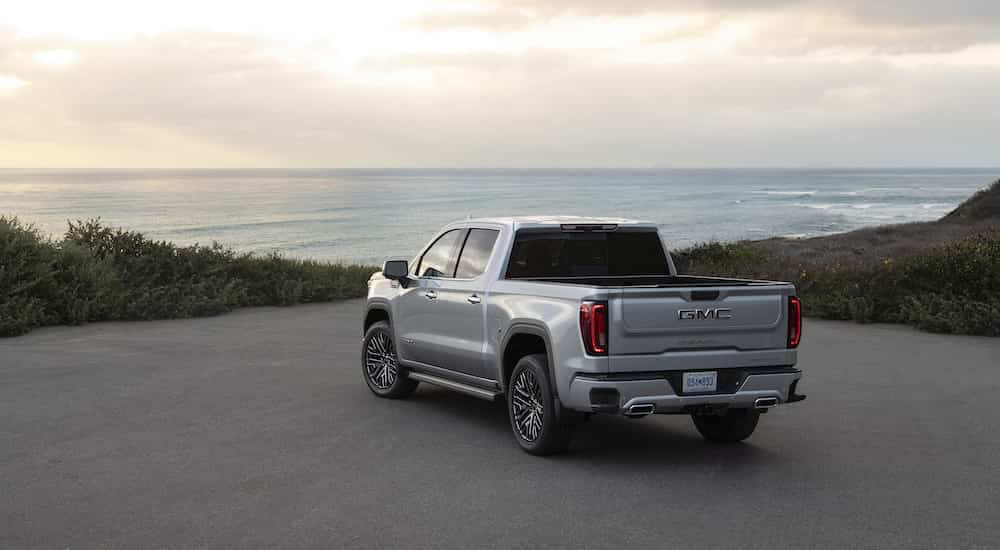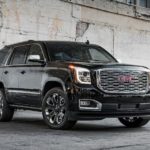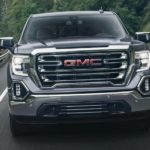Anyone familiar with the GMC brand is certainly aware of the term “Denali.” Named for the highest peak in North America, this top trim for a variety of GMC vehicles is synonymous with the height of luxury, performance, and refinement. If you’ve ever visited a GMC dealer, you’ve more than likely laid eyes upon a Denali model with awe and reverence. These black-clad vehicles are the equivalent of fine-tailored custom suits reserved for those who only accept the very best.
Considering the lineage and legacy that GMC has carved out for itself since its formation in 1911, it’s only fitting that a brand with such staying power would know how to deliver such a product. The Denali line transformed the workhorses of the truck industry into elaborately decorated stagecoaches, carrying with them dignity and sophistication.
From the Front Lines to the Top of the Trimline
GMC’s early years were marked by events like the energy crisis and the great depression, and GMC’s pivotal role during the second world war cannot be understated. As America went to war in 1941, GMC would not only produce trucks and armored cars for the war effort, but would take part in the massive armament process needed for the Allies to achieve victory. The factories of the entire GM family turned their attention to manufacturing bombers, machine guns, and other implements responsible for the tide of war turning in favor of the Allies. In the massive economic boom during the post-war years, GMC continued to expand—as did a highway system that would eventually stretch from coast to coast, and everywhere else in between.
This speaks to GMC’s ability to adapt and overcome, not to mention persevere and conquer. That brings us to the Denali. As the 20th century came to its inevitable close, the automotive market was beginning to change quite drastically. While the SUV wasn’t yet at the immense level of popularity it is today, the vehicle was beginning to undergo a change in terms of its overall appeal. While “bigger and stronger” was still the aim in design, vehicles such as the Lincoln Navigator proved that the SUV could be refined and luxurious, and could elevate this body style to a new demographic.
General Motors counteracted Lincoln’s offering with the introduction of the Cadillac Escalade in 1999, which was also meant to compete with models from other luxury offerings by Mercedes-Benz and Lexus. GMC, who were also intent on partying like it was 1999 (because it was), debuted the GMC Yukon Denali.
While this SUV’s intimidating front end caught the eyes of onlookers, inside was a surprise that almost no one could have imagined. A leather interior and power seats were included for maximum comfort, while a high-end Bose 7-speaker stereo system drowned out the cares of the world. There was still plenty in the performance department, as the 1999 Yukon Denali also came equipped with a 5.7-L V8 capable of generating 255 horsepower.
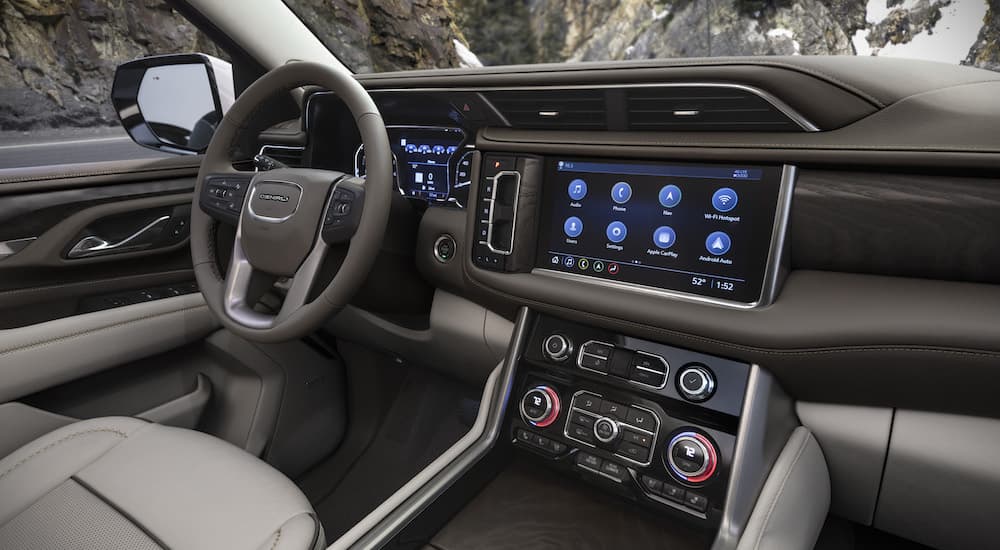
More Graduates in the Class of Elite
With the arrival of the new millennium, GMC saw an opportunity to expand the Denali brand, offering more options for those who loved pampering as much as they loved performance. In 2001, the GMC Sierra (their counterpart to the Chevy Silverado) joined the ranks of Denali for the 2002 model year as quite possibly one of the world’s first “posh pickups.” The GMC Sierra Denali provided a unique balance of luxury and performance, keeping drivers satisfied with an 8-speaker stereo system and a wide variety of standard features from OnStar. And yet, the Denali pickup lacked nothing in terms of workhorse capability. Equipped with a 6.0-L V8 capable of generating 325 horsepower, a maximum towing capacity of 10,000 lbs put many competitors to shame.
With consumer needs changing and the philosophy of SUV design beginning to change, GMC proved that even their top trim level could adapt to the industry-wide changes. For the 2005 model year, the GMC Envoy Denali made its mark as a high-end SUV for the everyman. It was the first step in a line of SUVs that would arrive in the years to come—models capable of adapting to the growing changes in consumer needs. 300 horsepower thanks to a 5.3-L V8 and seating for five adults in maximum comfort were both admirable attributes; however, changes were already in the air….
The Arrival of the Smaller-Sized Standard Bearers
Production would cease for the Envoy in 2009, as by now SUVs had changed drastically and more emphasis was placed on economy and compact size—not simply raw power. The next step in a new, economical SUV came in 2011, when the GMC Acadia received the Denali trim name. Stepping away from the V8 powertrains that had been utilized in the past, the Acadia utilized a 3.6-L V6 engine. Still effective with 288 horsepower and a towing capacity of 5,200 lbs, it was also slightly more fuel-efficient than Denalis of previous years. A combined MPG of 19 was a significant improvement from the Envoy’s average of 15. Chrome wheels and a comfortable interior were just a few of the luxury options that came standard.
To make an omelet, you have to break a few eggs. And when it came to an economical SUV with the Denali badge upon its exterior, the third time would be the charm. 2013 would bear witness to the arrival of the GMC Terrain Denali. Looking at its powertrain, one might be surprised to see the noticeable changes in the choice of engines. Offering a 2.4-L 4-cylinder and a 3.6-L V6, Denali devotees now had a choice between fuel economy and performance, as the V6 had a horsepower rating of 301, while the weaker 4-cylinder offered a combined MPG of 26.
Of course, the Terrain Denali still possessed the luxurious attributes that many had come to expect from the brand: a chrome front end, 18” and 19” wheels, and a spacious interior that placed comfort on a whole new level. Scoring a 4.5/5 from J.D. Power in terms of reliability, this was one of the best Denali models GMC had ever made.
The newest addition to the Denali line of excellence arrived in 2017. Cementing their focus on smaller, economical vehicles that still performed like their larger predecessors, the GMC Canyon Denali is a midsize pickup that delivers many of the same perks that luxury SUVs do. Providing a balance of comfort and capability, the 2017 Canyon offered a high-end Bose stereo system, as well as luxe interior features like ventilated & heated seats. Its suave, blacked-out surfaces and refined upholstery were unlike anything else in the truck market; even Laramie and King Ranch trims by competitors fell short—despite having similar price tags.
Under the hood, the 2017 Canyon Denali was just as impressive; an available Duramax diesel engine allowed for a towing capacity of 7,700 lbs. This number made the Canyon a class leader. With so much to offer inside and out, it’s no wonder why Denali has continued to be the standard of luxury and comfort—paired with performance and determination.
Denali: Fulfilling a Destiny
Since its inception, GMC’s Denali has managed to adapt and overcome several changes in trends and countermeasures from competitors. Unlike the other trim levels that other brands offer, Denali has transcended the term altogether to exist in a class all by itself. While it’s unknown where this top-tiered lineup will go next, rest assured it will successfully adapt to any major changes that the industry will experience.

